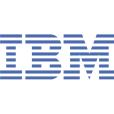 The National Center for Atmospheric Research (NCAR) has installed a new IBM (NYSE: IBM) supercomputer known as blueice that nearly triples the center's sustained computing capacity, IBM announced today. With a peak speed of 12 teraflops (12 trillion floating-point operations per second), the new machine will enable scientists to enhance the resolution and complexity of Earth system models, improve climate and weather research, and provide more accurate data to decision makers.
The National Center for Atmospheric Research (NCAR) has installed a new IBM (NYSE: IBM) supercomputer known as blueice that nearly triples the center's sustained computing capacity, IBM announced today. With a peak speed of 12 teraflops (12 trillion floating-point operations per second), the new machine will enable scientists to enhance the resolution and complexity of Earth system models, improve climate and weather research, and provide more accurate data to decision makers.blueice, which is the first phase of a system called the Integrated Computing Environment for Scientific Simulation (ICESS), is undergoing acceptance testing and will begin operations in February. A second phase of ICESS will be installed in 2008. ICESS will provide computing support for the geosciences until mid-2011.
"The increased production capacity of blueice will allow us to further enhance our computational campaigns," says Tom Bettge, director of Operations and Services for NCAR's Computational and Information Systems Laboratory. "Scientists will be able to address capability problems in turbulence, nested regional climate modeling, and ocean modeling, as well as in near real-time numerical weather forecasting. They'll be able to scale their codes into larger problem sizes or increase the complexity of the physics in their simulations."
"NCAR is committed to implementing computer systems that will enable greater understanding of Earth's climate and weather," says Dave Turek, vice president of Deep Computing at IBM. "Entrusted with this extremely important mission, NCAR has established an exciting technology roadmap that will help allow the organization to meet its goals today and in the future."
Phase 1 of ICESS, which will last for 18 months, consists of a supercomputer cluster based on IBM's System p5 575 Symmetric Multi-Processor (SMP) nodes, using the POWER5+ processor. The system will have a processor clock speed of 1.9 GHz, 4 terabytes of memory, and 150 terabytes of FASTt DS4800 storage. It will also have IBM's dual-link High Performance Switch -- a dedicated, high-speed network optimized for the node-to-node communications required by scientific codes. The cluster will also utilize IBM's Rear Door Heat eXchanger, a five-inch-deep cooling door that uses chilled water to dissipate heat generated from the back of computer systems. Rear Door Heat eXchanger offers innovations that aim to help optimize the power consumption, management, and cooling of infrastructure.
In addition to having a peak performance of 12 teraflops, blueice is expected to deliver a sustained performance of as much as 2 teraflops. Sustained performance, which measures a system's computational rate while running a workload of atmospheric, oceanic, and geoscience models, is considered the best indicator of a system's usability. blueice will be the first supercomputer at NCAR to pass the sustained-teraflop milestone.
"The scientific community and numerous technical and business-support experts at NCAR provided guidance over many months, ultimately recommending the IBM proposal," says Bettge.
NCAR will implement phase 2 of ICESS in June 2008 using systems based on IBM's upcoming POWER6 microprocessor. This will extend the capabilities of the installed High Performance Switch, storage subsystem, and clustering software solutions.
The National Center for Atmospheric Research and UCAR Office of Programs are operated by the University Corporation for Atmospheric Research under the sponsorship of the National Science Foundation and other agencies. Opinions, findings, conclusions, or recommendations expressed in this publication do not necessarily reflect the views of any of UCAR's sponsors.




No comments:
Post a Comment